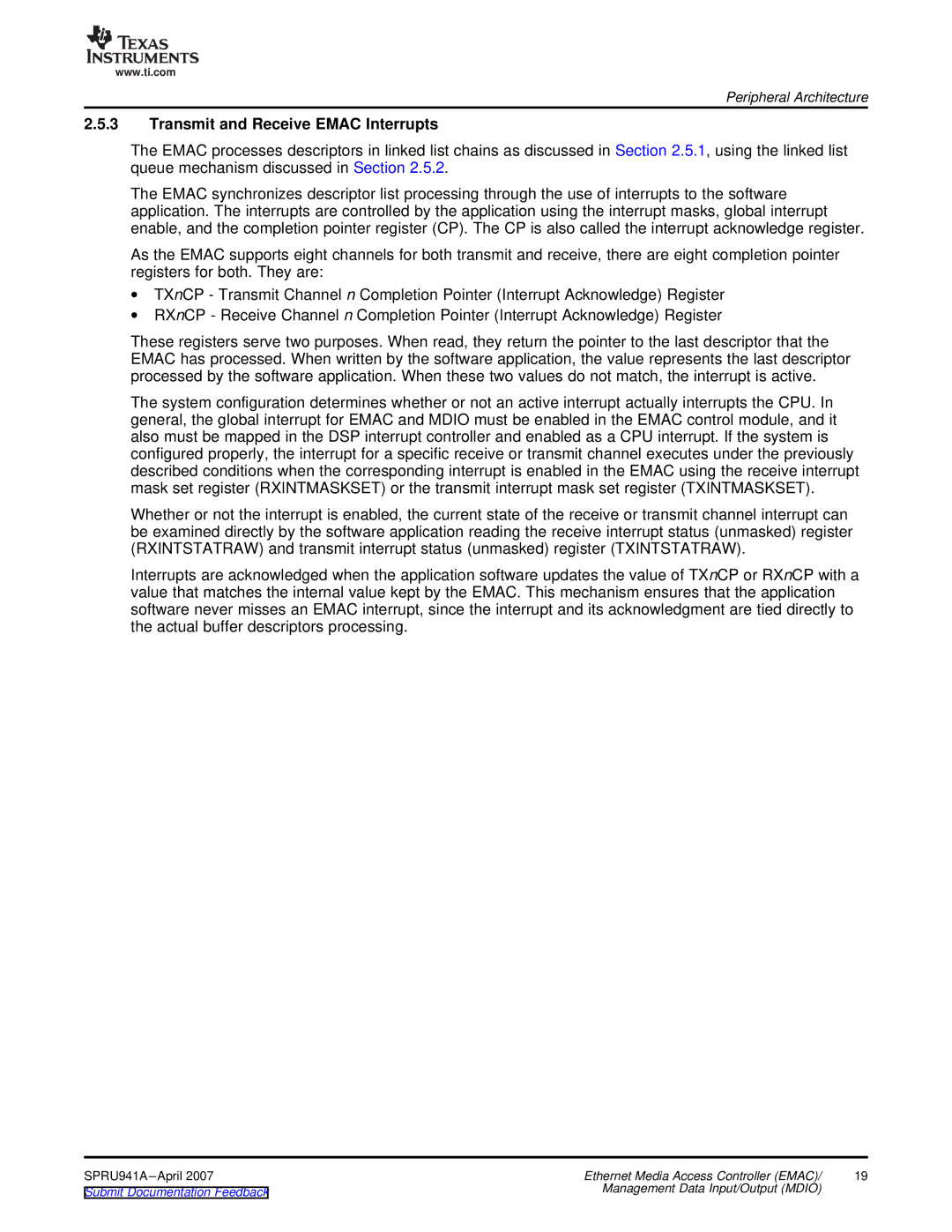
www.ti.com
Peripheral Architecture
2.5.3Transmit and Receive EMAC Interrupts
The EMAC processes descriptors in linked list chains as discussed in Section 2.5.1, using the linked list queue mechanism discussed in Section 2.5.2.
The EMAC synchronizes descriptor list processing through the use of interrupts to the software application. The interrupts are controlled by the application using the interrupt masks, global interrupt enable, and the completion pointer register (CP). The CP is also called the interrupt acknowledge register.
As the EMAC supports eight channels for both transmit and receive, there are eight completion pointer registers for both. They are:
∙TXnCP - Transmit Channel n Completion Pointer (Interrupt Acknowledge) Register
∙RXnCP - Receive Channel n Completion Pointer (Interrupt Acknowledge) Register
These registers serve two purposes. When read, they return the pointer to the last descriptor that the EMAC has processed. When written by the software application, the value represents the last descriptor processed by the software application. When these two values do not match, the interrupt is active.
The system configuration determines whether or not an active interrupt actually interrupts the CPU. In general, the global interrupt for EMAC and MDIO must be enabled in the EMAC control module, and it also must be mapped in the DSP interrupt controller and enabled as a CPU interrupt. If the system is configured properly, the interrupt for a specific receive or transmit channel executes under the previously described conditions when the corresponding interrupt is enabled in the EMAC using the receive interrupt mask set register (RXINTMASKSET) or the transmit interrupt mask set register (TXINTMASKSET).
Whether or not the interrupt is enabled, the current state of the receive or transmit channel interrupt can be examined directly by the software application reading the receive interrupt status (unmasked) register (RXINTSTATRAW) and transmit interrupt status (unmasked) register (TXINTSTATRAW).
Interrupts are acknowledged when the application software updates the value of TXnCP or RXnCP with a value that matches the internal value kept by the EMAC. This mechanism ensures that the application software never misses an EMAC interrupt, since the interrupt and its acknowledgment are tied directly to the actual buffer descriptors processing.
SPRU941A
Submit Documentation Feedback | Management Data Input/Output (MDIO) |
|
